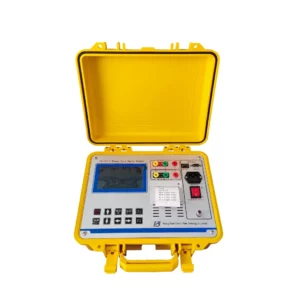The turns ratio test, also known as the TTR (Transformer Turns Ratio) test, is essential for evaluating the condition and performance of transformers.
Several warning signs may indicate the need for a turns ratio test:
- Abnormal Load Voltage: If the load voltage on the secondary side of the transformer is significantly different from the expected value based on the primary voltage and turns ratio, it could indicate a fault in the transformer windings.
- Unexplained Equipment Failures: Frequent or unexplained equipment failures, such as blown fuses or tripped circuit breakers, could be indicative of issues within the transformer, including turns ratio deviations.
- Inconsistent Performance: If the transformer exhibits inconsistent performance, such as fluctuations in voltage regulation or variations in output voltage under load, it may be due to problems with the turns ratio.
- Overheating or Excessive Heating: Excessive heating or overheating of the transformer, indicated by hot spots or abnormal temperature rise during operation, turns ratio test may be caused by an imbalance in the turns ratio between primary and secondary windings.
- Abnormal Noise or Vibration: Unusual noise or vibration coming from the transformer during operation may suggest internal faults, including turns ratio deviations, which can affect the magnetic flux distribution and lead to mechanical stress.
- Age and Maintenance History: Transformers that are approaching the end of their service life or have a history of inadequate maintenance may be more prone to turns ratio deviations and other winding faults.
- Visual Inspection: Visual inspection of the transformer may reveal physical damage or signs of degradation, such as burnt insulation, corroded terminals, or bulging windings, which can indicate underlying issues affecting the turns ratio.
- Diagnostic Testing Results: Results from other diagnostic tests, such as insulation resistance tests, power factor tests, or partial discharge measurements, may suggest problems within the transformer windings that warrant further investigation through a turns ratio test.
- Transformer Relocation or Installation: Whenever a transformer is relocated or installed in a new location, it is advisable to perform a turns ratio test to ensure that the transformer is functioning correctly and that there are no issues with the windings due to transportation or installation-related stresses.
By monitoring for these warning signs and conducting regular turns ratio tests as part of a comprehensive maintenance program, potential transformer faults can be detected early, allowing for timely corrective actions to be taken to prevent costly failures and ensure the reliability of the electrical system.
